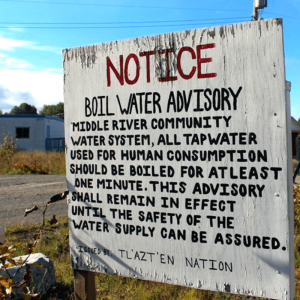Federal Water Tap, March 8: Water Provisions Abundant in House Democrats’ Climate Bill
The Rundown
A House bill to move the country to 100 percent clean electricity by 2035 acknowledges water-energy links. A USDA report finds that farm acreage using cover crops increased by 50 percent. The GAO reviews EPA regulatory actions regarding PFAS. The EPA will review a proposed mine in Minnesota for its effects on the Fond du Lac Band of Lake Superior Chippewa. Senate Democrats offer support for utility assistance in the pandemic relief package. And lastly, NOAA forecasters say that March is a pivotal month for this year’s Colorado River runoff.
“If a son of mine showed up with grades like these, I wouldn’t be happy.” — Sen. Tom Carper (D-DE) speaking at the unveiling of national infrastructure grades given by the American Society of Civil Engineers. Carper noted that though the grade for drinking water rose from a D+ to a C- since the last report card in 2017, overall America’s infrastructure is still unsatisfactory.
By the Numbers
3.4 million acre-feet: Estimated spring and summer runoff into Lake Powell, an amount that is just 47 percent of the 30-year average. As bad as that number seems, it’s still a marginal improvement of 1.5 percent over the February forecast. The Colorado Basin River Forecast Center says that March is a pivotal month for this year’s river runoff. Because of dry soils, a wet spring will be needed to rescue the basin.
News Briefs
House Climate Bill
House Democrats introduced a sweeping bill to move the country to 100 percent clean electricity by 2035.
The CLEAN Future Act is also filled with water-related actions. Those include provisions for investigating building code standards that would improve water-use efficiency, a process for reassessing hydropower licensing, groundwater monitoring requirements for coal ash pits, testing of drinking water near fracking sites, and water performance standards for federal buildings.
On this last point — performance standards — the bill directs federal buildings to reduce potable water consumption by 54 percent by 2030, as compared to a 2007 baseline.
The bill addresses environmental justice, giving the EPA administrator 180 days to draft a protocol for assessing the cumulative environmental burden on public health for low-income areas and communities of color. Factors to be considered: climate change and pollution. The final protocol is required within a year of the bill’s passage.
The bill gradually increases authorized funding for the Drinking Water State Revolving Fund to $5.5 billion by 2024. It also authorizes a $500 million annual grant fund to assist communities with the capital cost of removing PFAS in drinking water. And it extends programs for lead testing, replacing drinking water fountains in schools, and assisting tribal drinking water systems.
In addition, the bill would establish a climate and health program under the guidance of the Centers for Disease Control and Prevention. The program would identify areas and groups at risk of water-borne illness, heat stress, and mental health problems.
And one more thing: the bill requires the manufacturers of wet wipes that are not supposed to go into the toilet to add a Do Not Flush label to the package.
Assessing a Mine’s Impact on an Indian Reservation
The U.S. Environmental Protection Agency petitioned a federal court to allow the agency to conduct an additional review of the proposed PolyMet mine in northern Minnesota.
The Duluth News Tribune reports that EPA wants to further assess the impact that mine discharges would have on the Fond du Lac Band of Lake Superior Chippewa, whose reservation is located downstream. The court had suggested that the agency conduct the review.
The proposed copper-nickel mine is 70 miles upstream of the band’s reservation.
Senate Democrats Offer Support for Utility Assistance
Fourteen Senate Democrats sent a letter to Sen. Chuck Schumer, the majority leader, urging him to maintain provisions for utility bill assistance in the pandemic relief package.
The Senate did so, passing the $1.9 trillion package that includes $500 million for water bill assistance. The package now returns to the House for approval before it is sent to the president’s desk.
Studies and Reports
Cover Crops Increase
The number of acres of U.S. farmland that employ cover crops during the off-season increased by 50 percent between 2012 and 2017, according to a U.S. Department of Agriculture report.
Of the 15.4 million acres using cover crops, the highest adoption rates were in fields that grow corn silage. The state with the highest share of cover crops was Maryland, where a third of its farm acreage planted them.
Though farmers are not harvesting cover crops, these plantings provide environmental benefits like reducing erosion, increasing organic matter in soil, and minimizing nutrient loss.
The increase in cover cropping coincides with federal and state support, the report found.
In context: Healthy Soils Reduce Water Pollution
PFAS Review
The Government Accountability Office was asked to review six of the goals of the EPA’s regulatory plan for PFAS chemicals. The EPA has completed three of the actions, including a recent determination to regulate two of the chemicals in drinking water.
On the Radar
Electric Grid Resiliency
In the wake of winter storms that paralyzed Texas and the Deep South, several Senate committees will hold hearings on natural hazards and the electric grid.
The Environment and Public Works Committee kicks off the week with a hearing on March 10. Then the Energy and Natural Resources Committee takes up the topic on March 11.
In context: Like Developing Nations, Texas Confronts Lingering Water Crisis
Military Pollution and Human Health
On March 10, the Senate Committee on Veterans’ Affairs addresses toxic exposures in the military.
Federal Water Tap is a weekly digest spotting trends in U.S. government water policy. To get more water news, follow Circle of Blue on Twitter and sign up for our newsletter.
Brett writes about agriculture, energy, infrastructure, and the politics and economics of water in the United States. He also writes the Federal Water Tap, Circle of Blue’s weekly digest of U.S. government water news. He is the winner of two Society of Environmental Journalists reporting awards, one of the top honors in American environmental journalism: first place for explanatory reporting for a series on septic system pollution in the United States(2016) and third place for beat reporting in a small market (2014). He received the Sierra Club’s Distinguished Service Award in 2018. Brett lives in Seattle, where he hikes the mountains and bakes pies. Contact Brett Walton





Leave a Reply
Want to join the discussion?Feel free to contribute!